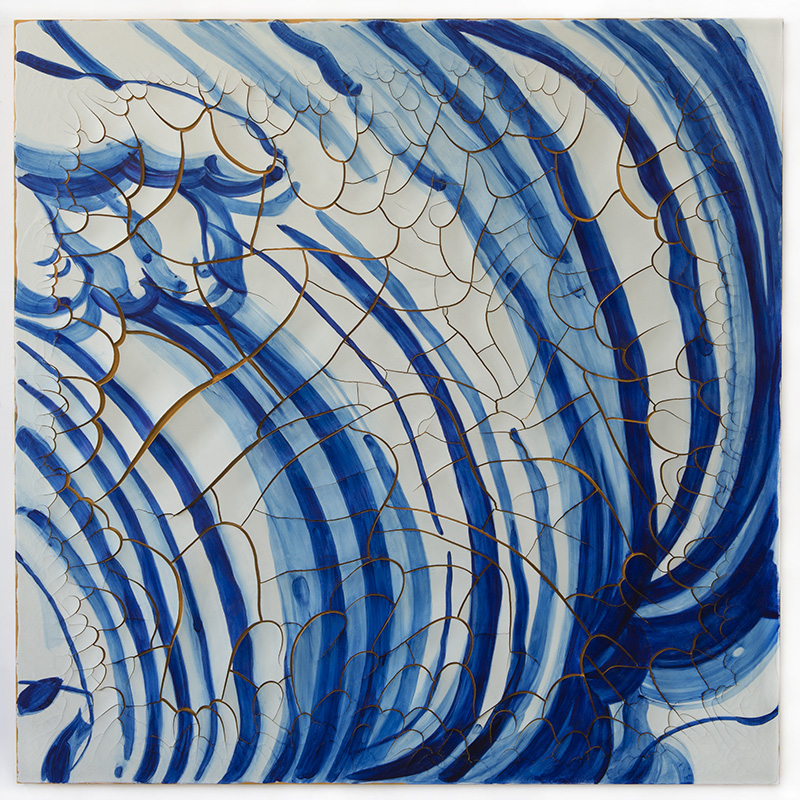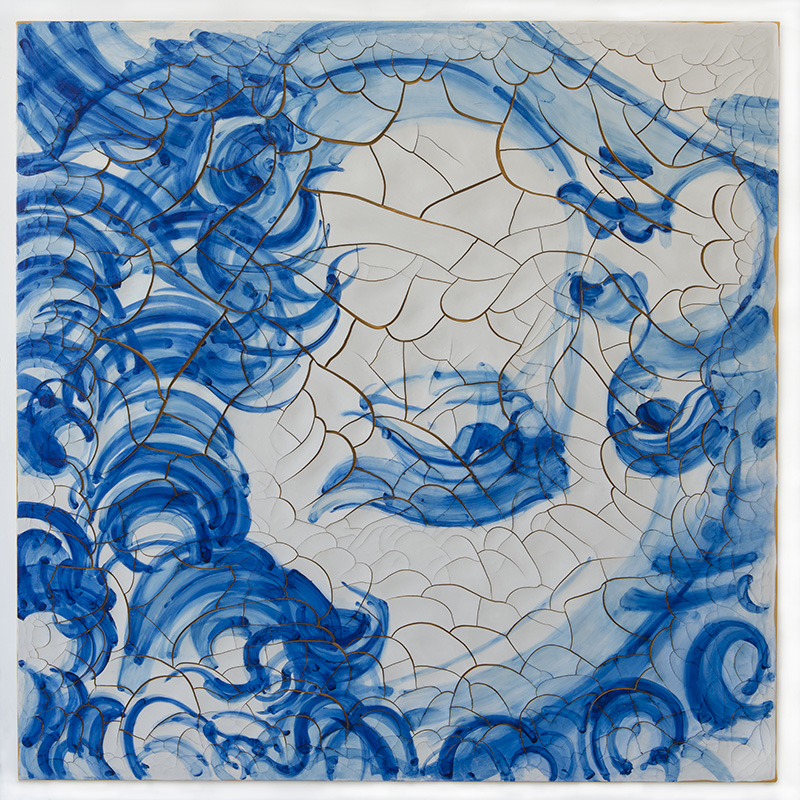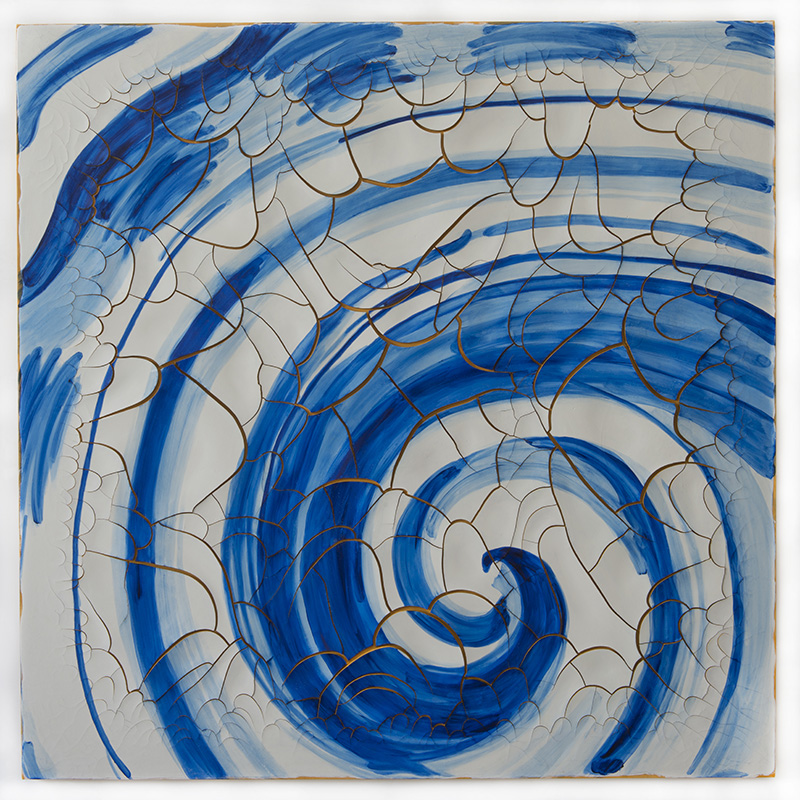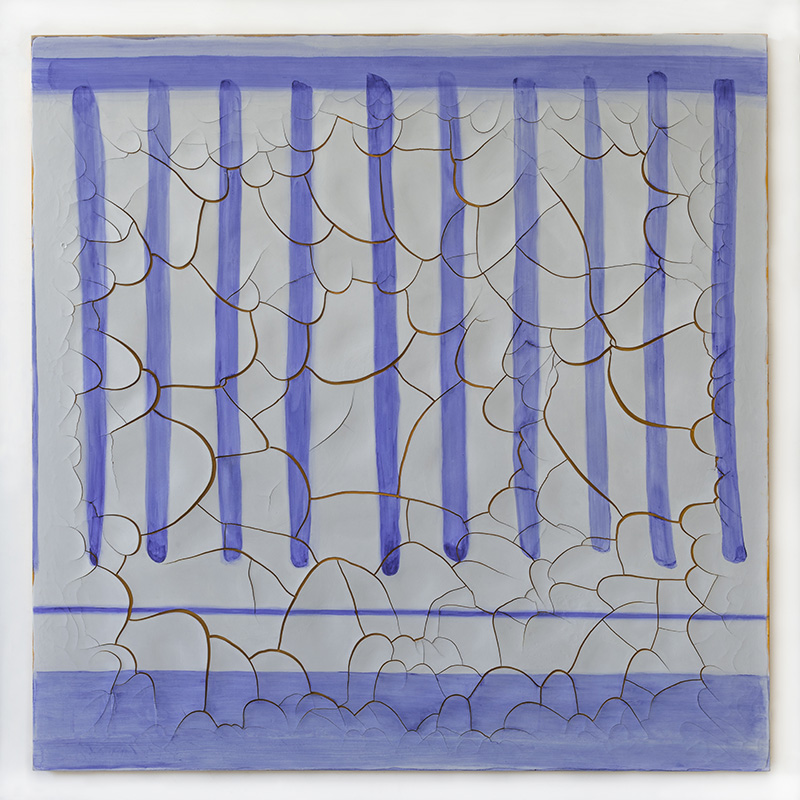ART CITIES:Rome-Adriana Varejão
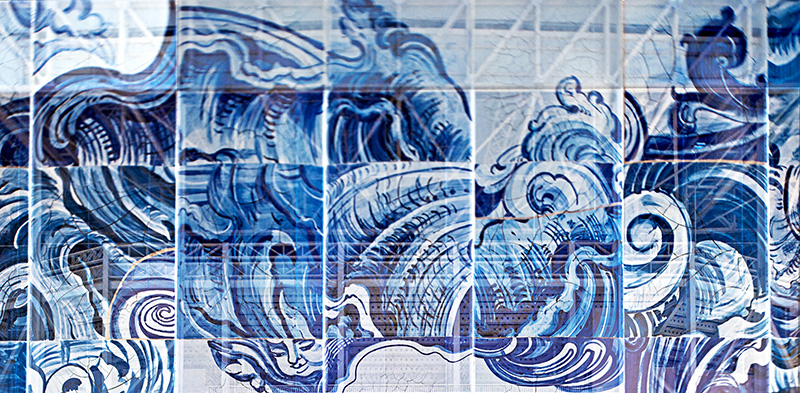
One of the most original voices in Contemporary Brazilian art, Adriana Varejão’s diverse practice comprises painting, sculpture, photography and installation. The artist is best regarded for her insightful considerations on the rich though conflicted history and culture of Brazil represented in her “Azulejão”, continuing ever since the first iteration in 1988. Azulejãos were conventionally used to adorn religious and secular buildings in order to homogenize the architecture into an illusionistic illustrative whole.
By Dimitris Lempesis
Photo: Gagosian Gallery Archive
Adriana Varejão’s constant invocation of the azulejo in her art functions as a metaphor for the mixing of cultures, whether by force or by desire. The works in “Azulejãos”, her solo exhibition at Gagosian Gallery are conceived specifically with the Rome gallery in mind, are Varejão’s largest single tile paintings to date. Motifs, such as a cherub’s head, an architectural fragment, a rose, and a shell, painted in subtle variations of blue and white according to their specific historical referents, are enlarged to the point where they begin dissolving into opulent abstract gestures. Her works are rendered on canvas in plaster and oil paint. The plaster is applied thickly to canvases laid on the ground and then left to dry. During the drying process, cracks begin to appear, as if by some natural geological phenomenon, so that every surface is unique and unrepeatable. In this work, the inscriptions of history, culture, landscape, geography and the human body that populated Varejão’s earlier paintings have been subsumed into a roiling delirium of blue and white patterns and fragmentary images, rendered in a grid of paintings to simulate a tiled wall of vast proportions. In another ongoing theme in Varejão’s work, which resonates with the many deceiving features of the Italian Baroque that pervades Roman art and architecture, a single totemic sculpture appears as a free-standing tiled architectural fragment whose cross-section reveals the shock of an interior of bloody viscera described in livid trompe l’oeil.
Info: Gagosian Gallery, Via Francesco Crispi 16, Rome, Duration 1/10-10/12/16, Days & Hours: Mon-Fri 10:30-19:00, www.gagosian.com
